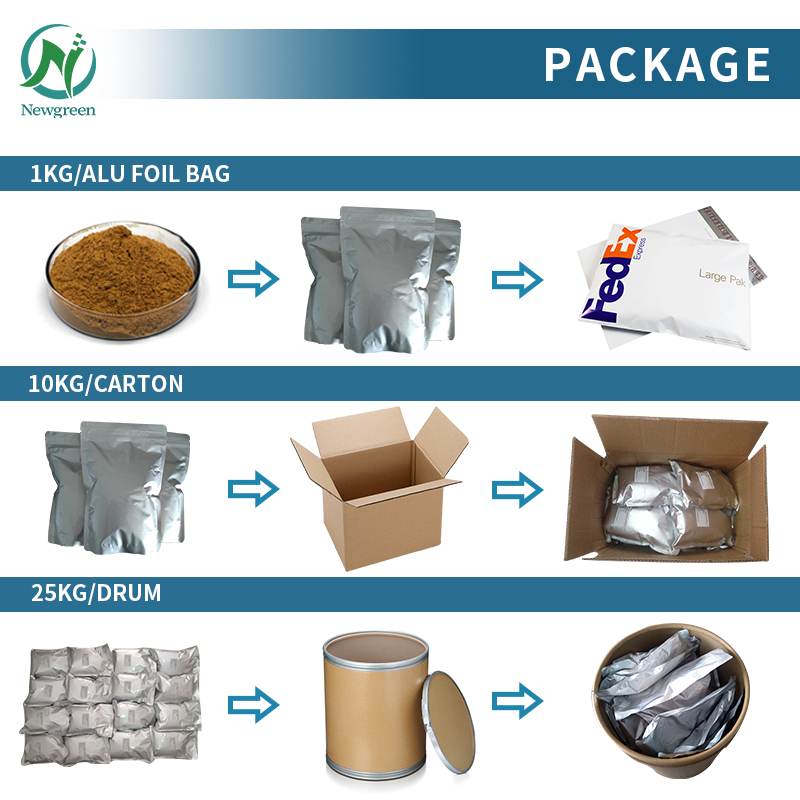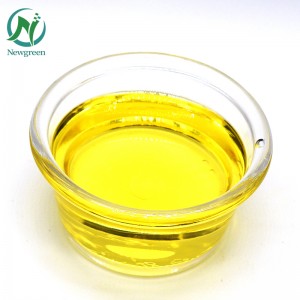Newgreen Supply Cellobiase HL Enzyme With Best Price

Product Description
Cellobiase (HL type) with an enzyme activity of ≥4000 u/ml is a highly active cellulase preparation specifically used to catalyze the hydrolysis of cellobiose (an intermediate product of cellulose degradation) into glucose. It is produced by microbial fermentation technology, extracted and purified into liquid or solid forms, and is suitable for a variety of industrial applications.
Cellobiase (HL type) is widely used in biofuels, food, feed, textiles, papermaking and biotechnology. Its high activity and synergistic effect make it a key enzyme in cellulose degradation and biomass conversion, with important economic and environmental value.
COA
| Items | Specifications | Results |
| Appearance | Free flowing of the light yellow solid powder | Complies |
| Odor | Characteristic smell of fermentation odor | Complies |
| Activity of enzyme
(Cellobiase HL) |
4,000 u/ml | Complies |
| PH | 4.5-6.5 | 6.0 |
| Loss on drying | <5 ppm | Complies |
| Pb | <3 ppm | Complies |
| Total Plate Count | <50000 CFU/g | 13000CFU/g |
| E.Coli | Negative | Complies |
| Salmonella | Negative | Complies |
| Insolubility | ≤ 0.1% | Qualified |
| Storage | Stored in air tight poly bags,in cool and dry place | |
| Shelf life | 2 years when properly stored | |
Function
Efficient Catalysis Of Cellobiose Hydrolysis: decomposition of cellobiose into two molecules of glucose, promoting complete degradation of cellulose.
Synergistic Effect: synergistic with endoglucanase (EG) and exoglucanase (CBH) to improve the efficiency of cellulose degradation.
Temperature Resistance: maintains high activity within a moderate temperature range (usually 40-60℃).
Ph Adaptability: exhibits optimal activity under weakly acidic to neutral conditions (pH 4.5-6.5).
Applications
Biofuel Production:In cellulosic ethanol production, it is used to degrade cellulose into fermentable glucose to increase ethanol yieldSynergistic with other cellulases to optimize the utilization of cellulose raw materials.
Food Industry:Used to improve the functionality of dietary fiber and increase the nutritional value of food.In juice processing, it is used to decompose cellulose and improve the clarity and juice yield of juice.
Feed Industry:As a feed additive, it decomposes cellulose in feed and improves the digestion and absorption rate of cellulose by animals.Improve the nutritional value of feed and promote animal growth.
Textile Industry:Used in bio-polishing process to remove microfibers on the surface of cotton fabrics and improve the smoothness and softness of fabrics.In denim processing, it is used in enzyme washing process to replace traditional stone washing and reduce environmental pollution.
Papermaking Industry:Used in pulp processing, decompose cellulose impurities, improve pulp quality and paper strength.In waste paper recycling, it is used in deinking process to improve the quality of recycled paper.
Biotechnology Research:Used in cellulose degradation mechanism research and optimization of cellulose enzyme system formula.In biomass conversion research, it is used to develop efficient cellulose degradation process.
Package & Delivery

















